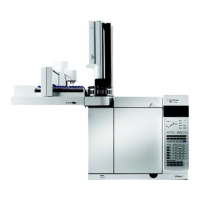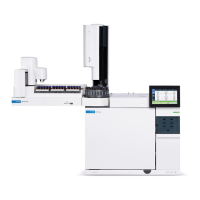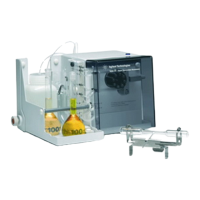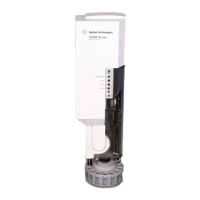GC Output Signals 7
Advanced User Guide 119
Analog Signals
If you use an analog recorder, you may need to adjust the signal
to make it more usable. Zero and Range in the Signal parameter
list do this.
Analog zero
Zero Subtracts value entered from baseline. Press [On/Yes] to
set to current Value or [Off/No] to cancel.
This is used to correct baseline elevation or offsets. A common
application is to correct a baseline shift that occurs as the result
of a valve operation. After zeroing, the analog output signal is
equal to the Value line of the parameter list minus the Zero
setpoint.
Zero can be programmed as a run time event. For details, see
“Run Time Programming” on page 12.
1 Verify that the detector is on and in a ready state.
2 Press [Analog Out].
3 Scroll to Zero.
4 Press [On/Yes] to set Zero at the current signal value,
or
Enter a number between -500000 and +500000. A value
smaller than the current Zero shifts baseline up.
Analog range
Range Scales data coming from the detector
Range is also referred to as gain, scaling, or sizing. It sizes the
data coming from the detector to the analog signal circuits to
avoid overloading the circuits (clamping). Range scales all
analog signals.
If a chromatogram looks like A or B in the next figure, the data
needs to be scaled (as in C) so that all peaks are visible on the
paper.
Valid setpoints are from 0 to 13 and represent 2
0
(=1) to 2
13
(=8192). Changing a setpoint by 1 changes the height of the
chromatogram by a factor of 2. The following chromatograms
illustrate this. Use the smallest possible value to minimize
integration error.

